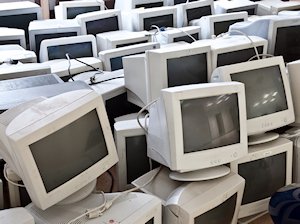Today, we will try and understand the challenges which confront Legacy MES and why it would not be an ideal solution in the current scenario. But first let's try and gauge the current scenario of the market from a modern manufacturer's point of view.
A big change for any manufacturer in the current global market is the paradigm shift in what is fundamentally important from a customer's perspective. Scale is no longer the sole objective of a manufacturing plant, since factors like customization, product variety and flexibility have gained importance. Customers today demand products faster, cheaper and personalized. This trend affects the entire value chain of organizations and compels them to become more agile, more responsive to their customers, making large scale single products lines becoming each time more obsolete.
Another change is the speed at which new products are being developed and are reaching the market. Product development cycles and time to market have drastically reduced. For manufacturers of technologically complex products such as electronics, bio-tech and medical devices the challenge is to have a stable production process which is capable of adapting to market changes almost instantaneously. The present market demands that the production process of a manufacturer be more flexible, more visible and, above all, more integrated with the other functional areas of the organization and beyond.
Technically complex manufacturing operations, like Semiconductor or High-end electronics, dealing with limited number of products/product variants, started using highly specific software applications for their shop/production floors. These applications were meant to record data from the equipment and process and were generally designed by IT experts/specialists only to represent status quo.
Such applications can be referred to as Legacy MES applications. They are applications which are process specific to the extent that they are rigid and require a great deal of effort and cost for even slightest modification. A Legacy MES system requires complex coding, specific to the current process and may or may not be able to cover all functional areas within the same fundamental application.
Such an application would be ideal for an organization whose process experiences minimum exposure to change and delivers a single or few products which would remain unaltered for a period of next 10-15 years. Another feature worth mentioning is that these applications require both hardware and software to be installed in-house and thereby add higher cost in terms of ownership, updating and routine maintenance.
But do Legacy MES systems have what it takes to survive in the market scenario discussed above, which is characterized by rapid change? Can the Legacy systems provide the flexibility, visibility and integration essential for technologically complex manufacturing facilities? The answer sadly enough is a big NO. Such applications have some major drawbacks which make them a less than ideal choice for the future.
Legacy systems are typically coded and designed to be static systems, as they are very difficult to modify or upgrade. These systems require IT experts to be onboard at all times, due to the complex nature of data generated. This situation poses multiple problems, such as need to retain these 'Knowledge employees' and the risk of losing their expertise to competitors.
Legacy systems are difficult or nearly impossible to integrate with other enterprise applications due to issues of interfacing or the complexity/obsolete nature of their architecture and design. A common example of the lack of integrative capabilities is the absence of relational databases in the legacy mainframe systems required to integrate with web-based ERP or SCM systems. Users and process owners can't configure these systems and even data acquisition and data analysis requires help form IT experts.
Another major flaw in such systems is that they are often reactive in nature and fail to provide real-time information to the correct person. The data generated is generally crude and needs further analysis before it can be presented as potent information. Due to their inflexible nature, such systems often fail to account for all the nuances and subtleties which make a process more complex and thereby more unique.
Considering Flexibility, Visibility and Integration as three major requirements for a modern manufacturer, legacy MES applications fail on all three. So the next logical question that comes to mind is- 'If Legacy MES won't work, what other options do we have?'
The answer is straightforward: Modern MES solutions which use standard IT platforms as the basic architecture to develop modular yet customizable systems. Modern MES applications use common and standard platforms from Microsoft, IBM etc. and then use this architecture to provide a more customized solution for a plant. This approach allows the MES vendor to capture the exact needs of the manufacturer without having to make the system rigid or extremely complex. Such applications are a WIN-WIN-WIN for the customer.
First, these applications are flexible as the amount of complex/unique coding is minimal. This modularity also makes these applications more cost effective. The flexibility renders the application more responsive and helps managers make changes faster without having to rely on IT experts for every move made, i.e. more power to the actual users and process owners.
Secondly, due simplicity of use and better communication with the equipment and process alike, the MES is capable of covering all functional areas and improve end-to-end visibility within the process.
Thirdly, and most importantly, the use of standard architecture allows for better integration of the MES with other enterprise applications such as the ERP and SCM, resulting in an unparalleled clarity and control throughout the value chain. With such an MES application, manufacturers can control and improve the process of their own plants and the plants of their secondary or even tertiary level suppliers and can also respond in an agile manner to any changes in the market resulting from customer, competitor or technological front.
You can find this and other blog entries here


